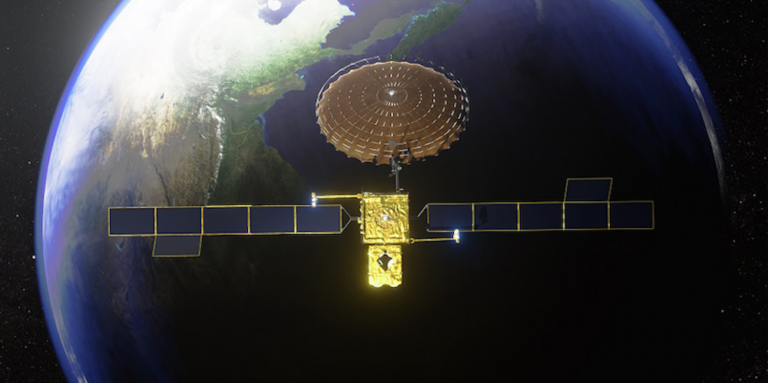Mobile satellite communications operator, Inmarsat, has announced details of the launch of the first satellite in its Inmarsat-6 fleet (I-6 F1). The satellite will launch using H-IIA Launch Vehicle No. 45 (HIIA F45) from Mitsubishi Heavy Industries (MHI) on 21 December, 2021 at 14:33:52pm through 16:33:26pm GMT.
When this first satellite in Inmarsat’s sixth-generation (I-6) fleet launches from the Yoshinobu Launch Complex at the JAXA Tanegashima Space Center, Kagoshima Prefecture, Japan, it will be the first to feature dual-payload satellites. The I-6s will support L-band (ELERA) and Ka-band (Global Xpress) services as part of the company’s ORCHESTRA dynamic mesh network.
The launch should be in safe hands, as MHI Launch Services claims a success rate of 98.1% and has provided 47 successful consecutive launches, delivered on-time. MHI is providing a dedicated launch service for the I-6 F1 launch with the H-IIA Launch Vehicle, configured as H2A204/4S, with four solid rocket boosters (SRB-As) and a 4m diameter payload fairing. The core stages of the H2A launch vehicle are undergoing final checks at MHI’s factory in Nagoya, Aichi Prefecture, ahead of their shipment to the launch site on Tanegashima island, Kagoshima Prefecture, which is located in the southwest of Japan.
“Our first Inmarsat 6 satellite, I-6F1, is the largest and most advanced commercial communications satellite ever launched and we look forward to the event in Japan with our trusted partner, MHI,” said Rajeev Suri, CEO of Inmarsat. “The I-6s are Inmarsat’s first-ever hybrid L- and Ka-band satellites, incorporating increased capacity and new technological advances for ELERA’s transformational L-band services alongside additional Global Xpress high-speed broadband capacity.”
As I-6 F1 will provide what Inmarsat describes as a “dramatically increased” network capacity and resilience, it will also play a role in the reliable geostationary earth orbit infrastructure that underpins ORCHESTRA – the world’s first network that will combine geostationary, low earth orbit and terrestrial 5G into one system.





